SEO (Search Engine Optimization)
- Become an SEO Specialist – From Basics to Advanced Ranking Strategies
- Job-Ready SEO Skills Taught by Industry Experts
- Hands-On Training in On-Page, Off-Page, Technical SEO & Local SEO
- Build Real SEO Projects, Audit Live Websites, and Rank Pages
- Perfect for Students, Freelancers & Working Professionals
Weekday & Weekend Batches Available
Starts from
18 August, 2025
Duration 25 days
Enquire Now
Demo Lecture For Online & Classroom ! Hurry Up
Recruiters for SEO Learners
Why Join Our Advanced SEO Course?
Industry Professional-Led Sessions
Learn directly from seasoned SEO experts with real-world experience in ranking websites, scaling organic traffic, and driving business growth. Our mentors bring proven strategies and the latest updates from Google algorithms to the classroom bridging the gap between theory and
practice.
Career Assistance & Placement Support
With a 93% placement success rate, we don’t just train you we help you land your dream role. Get access to resume building workshops, interview coaching, mock interviews, job referrals, and freelance guidance tailored for SEO careers.
Master Industry-Standard Tools
Get hands-on training with 20+ professional SEO tools used by agencies and top marketers:
● Keyword Research: SEMrush, Ahrefs, Google Keyword Planner
● Site Audits: Screaming Frog, Moz, Google Search Console
● On-Page Optimization: Yoast SEO, Surfer SEO, RankMath & more.
Build a Robust Project Portfolio
Work on live websites, audit real businesses, and build a complete SEO portfolio that
showcases your skills. From technical SEO to backlink strategy and content optimization, you’ll graduate with 4–6 practical projects to impress recruiters or clients.
Dedicated Peer Network
Join a collaborative community of learners, freelancers, and marketers. Share feedback, build connections, and even partner on real projects. Your network is your net worth and it starts here.
Earn a Recognized Certification
Stand out with 10+ certifications, including:
- Google Search Certification
- HubSpot SEO Certification
- SEMrush SEO Toolkit
- Our Own Advanced SEO Certification
These globally recognized credentials will boost your resume and increase your credibility with employers and clients.
SEO Course Curriculum
Fundamentals of SEO
1. Introduction to SEO
- What is SEO (Search Engine Optimization)?
- Why SEO is Critical for Website Traffic
- How SEO Impacts Business Growth
2. History of the Internet and How it Got Started
- The Early Days: ARPANET to the World Wide Web
- Development of Search Engines (Yahoo, AltaVista, Google)
- How the Need for SEO Emerged
3. Types of Search Engines and How They Work
- Crawling, Indexing, and Ranking Explained
- Major Search Engines: Google, Bing, Yahoo, DuckDuckGo
- How Search Engines Display Results (SERPs)
4. SEO Techniques
- On-Page SEO Techniques
- Off-Page SEO Techniques
- Technical SEO Techniques
- Importance of a Balanced SEO Strategy
5. Different Types of SEO
- Local SEO
- E-commerce SEO
- Mobile SEO
- Voice Search SEO
- International SEO
6. White Hat, Black Hat, and Grey Hat SEO
- Ethical SEO Practices (White Hat)
- Risky Techniques (Black Hat)
- Middle-ground Strategies (Grey Hat)
- Examples and Consequences
7. What is Google Crawler/Bot?
- What Crawlers Do
- How Websites are Discovered and Indexed
- Robots.txt and Sitemap Files
8. Google Algorithm and Its Importance
- How Google’s Algorithm Determines Rankings
- The Role of Machine Learning (AI in SEO)
9. Understanding Webmaster Guidelines and Use-Cases
- Google’s Official Guidelines
- Do’s and Don’ts for SEO Success
- Importance of Following Best Practices
10. On-Page SEO and its Steps
- Importance of Meta Titles and Meta Descriptions
- Heading Structures (H1, H2, H3)
- Image Alt Text and Optimization
- URL Structure and Internal Linking
11. What is Page Rank and Its Importance
- Understanding Google’s PageRank Algorithm
- How Link Authority Works
- PageRank’s Role in Today’s SEO
12. Off-Page SEO and Strategy
- Building Quality Backlinks
- Social Signals and Their Impact
- Guest Posting, Influencer Outreach
13. Google Algorithm Updates (Penguin, Panda, Hummingbird, Rankbrain, and More)
- Overview of Major Updates
- How Each Update Changed SEO Practices
- Staying Updated and Adapting
14. Different Types of Keywords and Their Importance
- Short-tail vs Long-tail Keywords
- Branded vs Non-Branded Keywords
- Geo-targeted Keywords
15. How to do Keyword Research and Tools to Use
- Using Google Keyword Planner
- Other Tools: Ubersuggest, Ahrefs, SEMrush
- Finding Buyer Intent Keywords
16. When and Where to Use: Transactional Keywords & Informational Keywords
- Understanding Search Intent
- Mapping Keywords to Buyer’s Journey
Example Scenarios 17.
- Title Tag, Meta Description, Anchor Links, Header Tags
- Crafting SEO-friendly Titles and Descriptions
- Importance of Anchor Text in SEO
- Best Practices for Headings and Subheadings
18. Image and Video Optimization
- Best Formats and Compression Techniques
- Importance of Alt Text
- SEO for YouTube Videos (Titles, Tags, Descriptions)
19. What are Backlinks? How to Build an Effective Backlink Strategy
- Importance of Quality Over Quantity
- Natural vs Unnatural Links
- Outreach and Relationship Building
20. Do’s and Don’ts of Link Building
- Best Practices for Safe Link Building
- Common Mistakes That Can Hurt SEO
- How to Recover from a Penalty
21. Universal SEO (YouTube Video Optimization, Image, PPTs, and Audio Optimization)
- Basics of Multimedia SEO
- Optimizing Audio Files for SEO
- Optimizing Slide Decks (PPTs) for Online Sharing
Voice Search Optimisation
1. Introduction to Voice SEO
- What is Voice SEO and Why It Matters
- Rise of Voice-Enabled Devices
- The Shift from Typing to Speaking
2. What is Voice Search?
- How Voice Search Works (Speech Recognition + AI)
- Differences between Text Search and Voice Search
- Popular Voice Assistants: Google Assistant, Siri, Alexa, Cortana
3. Importance of Voice Search (updated for 2025!)
- Increasing Voice Search Adoption Rates
- Voice Search in Smart Homes, Vehicles, and Wearables
- Future Trends in Voice Technology
4. Voice Search vs Personalized Search
- Definition of Personalized Search
- How Voice and Personalization Work Together
- Implications for SEO (Customized Search Results)
5. What is Position Zero?
- Definition: Featured Snippet Position Above #1 Rank
- Why Voice Search Reads Position Zero Results
- Examples of Position Zero Snippets
6. How to Achieve Position Zero?
- Writing Clear, Direct Answers
- Using Q&A Format (Questions and Answers)
- Creating Structured Lists and Tables
- Adding FAQ Pages
- Optimizing for Conversational Keywords
7. What is E-A-T?
- E-A-T: Expertise, Authoritativeness, Trustworthiness
- Google’s Quality Rater Guidelines
- How to Build E-A-T:
- Displaying Author Credentials
- Gaining Positive Reviews and Testimonials
- Publishing High-Quality, Fact-Checked Content
8. Importance of Structured Data
- What is Schema Markup?
- How Structured Data Improves SEO
- How to Implement Structured Data for FAQs, Articles, Products
- Tools: Google’s Structured Data Markup Helper, Schema.org
9. Optimizing Your Content for Voice SEO
- Focus on Natural, Conversational Language
- Target Long-Tail and Question-Based Keywords
- Build Local SEO (especially “Near Me” searches)
- Mobile Friendliness and Page Speed Optimization
- Improving Readability and Simplicity 10. How Alexa and Google Home Work
- How Voice Assistants Process and Respond to Queries
- Importance of Local Listings (Google My Business, Alexa Skills)
- How Skills and Actions Help Businesses Get Found
- Emerging Trends: Smart Home SEO, IoT Integration
Local SEO
1. What is Local SEO? How it Works ?
- Introduction to Local Search
- Why Local SEO is Critical for Small Businesses
- How Google Ranks Local Businesses
2. NAP Listings (Name, Address, Phone Number)
- What is NAP Consistency?
- How to Maintain and Audit NAP Listings
- NAP Across Directories and Citations
3. How to Optimize a Local Business
- Optimizing Business Title and Description
- Local Keyword Research
- Localized Content Strategy
4. Business Listing on GMB (Google My Business)
- Setting up and Verifying GMB
- Best Practices for Profile Optimization
- Using GMB Insights
5. Getting Verified on GMB
- Verification Methods (Postcard, Phone, Email)
- Troubleshooting GMB Verification Problems
6. Posts, Events & Product Listings
- Creating GMB Posts (Offers, Events, Updates)
- Using GMB for Product and Service Highlights
7. Importance of Google Reviews
- How Reviews Influence Local Rankings
- Asking for Reviews (Ethical Guidelines)
- Managing Negative Reviews 8. GMB Analytics
- Tracking Calls, Website Clicks, Direction Requests
- Analyzing GMB Performance Metrics
Advanced SEO
1. What is a Sitemap? Different Types
- XML vs HTML Sitemap
- Image, Video, News Sitemaps
- Best Practices for Sitemap Submission
2. XML, HTML Sitemaps and their Importance
- Creating and Submitting Sitemaps to Google Search Console
3. What is AMP (Accelerated Mobile Pages)?
- Benefits of AMP
- Setting Up AMP on Your Website
- Measuring AMP Impact
4. How to Create an AMP Site
- Using WordPress Plugins
- Custom HTML for AMP
- Testing AMP Pages
5. Robots.txt
- Purpose and Syntax of Robots.txt
- How to Control Search Engine Crawling
6. HTTP Status Codes (404, 301, 503)
- Understanding Client and Server Errors
- How to Fix Common SEO Errors
7. Advanced Search Operators
- How to Use Search Operators for SEO Research
- Examples: site:, intitle:, inurl:, etc.
8. What is the Knowledge Graph?
- How Google Builds the Knowledge Graph
- How to Become Part of It
9. Featured Snippets (Types and Examples)
- Paragraph, List, Table, Video Snippets
- How to Structure Content for Snippets
10. Zero Results and Answer Boxes
- What are Zero-Click Searches?
- Strategies to Appear in Answer Boxes
11. Page Speed Optimization
- Importance of Fast Loading Websites
- Tools: Google PageSpeed Insights, GTmetrix
- Quick Wins for Speed Optimization
Technical SEO
1. What is Schema Markup?
- Introduction to Structured Data
- How Schema Improves SEO
2. Different Types of Schema
- Article, FAQ, Product, Local Business, Event, Recipe Schemas
- Examples and Use Cases
3. How to Implement Schema Markup
- JSON-LD, Microdata, RDFa Formats
- Manual vs Plugin-Based Implementation
4. Importance of Structured Data
- Enhanced Listings (Rich Results, Rich Snippets)
- Higher CTR (Click-Through Rates)
5. Rich Snippets, Rich Cards, Carousel
- Examples and Implementation Guide
- Tools: Google’s Rich Results Test
6. Broken Links (404 Errors)
- How Broken Links Hurt SEO
- Tools to Detect and Fix Broken Links
7. Search Console: How to Use It
- Setting Up and Verifying Your Website
- Important Reports: Coverage, Enhancements, Core Web Vitals
8. Handling AMP Errors
- Common AMP Issues
- Debugging and Resolving AMP Errors
9. Search Analytics
- Understanding Impressions, Clicks, CTR, and Position
- Identifying Top Pages and Queries
10. What is 301 Redirection? How to Implement It
- Why Redirection Matters
- How to Properly Redirect URLs Without SEO Loss
SEO Auditing
1. What is an SEO Audit?
- Definition and Purpose of an SEO Audit
- Why SEO Audits are Critical for Website Health
- Frequency of Conducting Audits
2. Importance of SEO Audit
- Benefits of Regular SEO Audits
- Impact on Search Rankings, User Experience, and Conversions
3. How to Perform an SEO Audit for a Website
- Setting Objectives for the Audit
- Step-by-Step Audit Process
- Key Areas to Focus: On-Page SEO, Off-Page SEO, Technical SEO
4. Manually Auditing a Website (Without Using Tools)
- Checking Site Structure and Navigation
- Evaluating Content Quality
- Manual Backlink Checking
- Identifying Broken Links and Redirects
5. Auditing Using Tool
- Importance of Automated Tools
- How Tools Speed Up and Improve Accuracy
6. SEO Tools Overview
- Introduction to Popular SEO Tools
- Free vs Paid Tools
7. Tools Covered: Ahrefs, Moz, SEMrush, Screaming Frog
- Overview and Feature Comparison
- Practical Hands-On Demos
- When to Use Each Tool
8. Pagespeed Analysis Tools
- Google PageSpeed Insights, GTmetrix, Pingdom
- Understanding Core Web Vitals
- Practical Improvements Based on Reports
9. Competitor Analysis
- How to Audit Your Competitors’ Websites
- What Metrics to Watch
- Finding Opportunities Based on Competitor Gaps
10. Backlink Analysis for Your Website and Competitor Sites
- Importance of Backlink Profiles
- Identifying Toxic Links
11. SEO Audit Report and Best Practices
- Structuring an SEO Audit Report
- Key Sections: Issues, Impact, Recommendations
- Common Mistakes to Avoid
12. Building an SEO Strategy Based on Audit Report
- Prioritizing Issues Based on Business Impact
- Action Plan Creation
- Setting KPIs and Follow-up Checks
Google Analytics
Module 1: Introduction to Web Analytics
- What is Web Analytics?
- History and evolution of analytics tools
- Difference between analytics and data science in marketing
Module 2: Setting Up Web Analytics
- Creating a Google Analytics Account (GA4 focus)
- Connecting GA4 to a website (via GTM or manual code)
- Configuring GA4 data streams
- Validating installation with Google Tag Assistant
Module 3: Understanding GA4 Structure
- Difference between Account, Property, and Data Stream
- Navigating the GA4 interface
- Overview of GA4 vs Universal Analytics
Module 4: Key Concepts & Metrics
- Sessions vs Users vs Pageviews
- Bounce Rate and Engagement Rate
- Average Session Duration
- Events vs Goals (Conversions)
- Source/Medium/Channel
Module 5: KPI Identification & Tracking
- What are KPIs in digital marketing?
- Defining business-specific KPIs
- Creating SMART KPIs
- Mapping KPIs to marketing objectives
Module 6: Data Collection & Filters
- How data is collected in GA4
- Using Filters to exclude internal traffic
- Cross-domain tracking setup
- Data retention settings
Module 7: Advanced Tracking with GTM
- Introduction to Google Tag Manager
- Tag, Trigger, Variable structure
- Setting up Event tracking (clicks, form submits, scroll)● Using Data Layer for dynamic values
- Custom dimensions & metrics
Module 8: Consumer Behavior Analysis
- Behavior Flow reports
- Landing Page vs Exit Page analysis
- Path Exploration (GA4 feature)
- Funnel visualization
Module 9: Acquisition & Traffic Insights
- Traffic Source analysis
- Organic vs Paid traffic breakdown
- Campaign tagging using UTM parameters
- Using Campaign URL Builder tool
Module 10: Conversion Tracking
- Setting up Conversions in GA4
- Measuring form fills, purchases, downloads
- Creating Goals in GA4 (events as conversions)
- Micro vs Macro conversions
Module 11: E-commerce Tracking
- Enhanced e-commerce overview
- Product view, add to cart, checkout, purchase tracking
- Integrating e-commerce platforms (Shopify, WooCommerce, Magento)
Module 12: Attribution Models
- What is Attribution?
- First click, Last click, Linear, Time-decay, Data-driven models
- Attribution tools outside GA (e.g., Google Ads, Facebook)
Module 13: Reporting and Dashboards
- Creating Custom Reports in GA4
- Building dashboards in Google Looker Studio (formerly Data Studio)
- Exporting and sharing reports
- Scheduling automated email reports
Module 14: Data Segmentation & Views
- Using Audiences in GA4
- Segmenting by demographics, device, behavior
- Creating audiences for remarketing
- Views vs Reports vs Audiences
Module 15: Alerts, Annotations, and Real-time Analysis
- Setting up Custom Alerts (e.g., traffic drop)
- Using Annotations to record major events
- Monitoring real-time visitors
Module 16: Strategic Decision Making with Analytics
- How to derive insights from data
- Detecting trends and anomalies
- Aligning insights with business strategy
- Presenting data to stakeholders
🧰 Bonus Modules (Highly Recommended)
- Integrating Google Ads with GA4
- Integrating GA4 with Search Console
- GDPR and cookie compliance in analytics
- Data sampling: What it is and how to avoid it
- Using BigQuery with GA4 for raw data analysis
Google Search Console
📘 Module 1: Introduction to Google Search Console
● What is Google Search Console?
● History and evolution (from Webmaster Tools to GSC)
● Benefits of using GSC for SEO and site performance
📘 Module 2: Setting Up Google Search Console
● Verifying site ownership (HTML tag, Google Analytics, DNS, GTM)
● Adding multiple properties (domain vs URL prefix)
● Connecting GSC with Google Analytics and other tools
📘 Module 3: Understanding the GSC Dashboard
● Overview of the main dashboard
● Explanation of menus and filters
● Property switcher and user settings
📘 Module 4: Performance Reports
● Understanding metrics: Clicks, Impressions, CTR, Average Position
● Filtering by country, device, date, query, page
● Identifying top-performing keywords and pages
● Using regex filters for advanced keyword analysis
📘 Module 5: Index Coverage & Page Indexing
● What is indexing? How it works
● Difference between “Submitted” vs “Indexed”
● Fixing “Excluded”, “Error”, “Valid with warnings” issues
● Request Indexing tool and when to use it
📘 Module 6: Sitemaps & Crawling
● Submitting a sitemap
● XML Sitemap best practices
● Understanding crawl stats (frequency, crawl budget)
● Dealing with crawl anomalies
📘 Module 7: URL Inspection Tool
● Inspecting a single URL
● Viewing coverage, index, and enhancement status
● Live URL test vs Indexed version
● Requesting re-crawl of a page
📘 Module 8: Mobile Usability
● Identifying and fixing mobile usability errors
● Mobile-first indexing explained
● Best practices for mobile-friendly websites
📘 Module 9: Enhancements & Structured Data
● What are enhancements in GSC?
● Validating structured data (FAQs, breadcrumbs, sitelinks, etc.)
● Rich result eligibility
● Troubleshooting structured data errors
📘 Module 10: Core Web Vitals (CWV)
● What are CWV metrics? (LCP, FID, CLS)
● Page Experience overview
● Diagnosing and improving CWV using GSC
● Integrating GSC with PageSpeed Insights & Lighthouse
📘 Module 11: Manual Actions & Security Issues
● Types of manual penalties
● How to submit a reconsideration request
● Malware, spam, and hacked content alerts
● Best practices to maintain site health
📘 Module 12: Links Report
● Internal Links vs External Links
● Top linked pages and anchor text analysis
● Identifying low-quality backlinks
● Using data for internal linking strategy
📘 Module 13: GSC for SEO Strategy
● Using GSC data for on-page SEO
● Identifying content opportunities from query data
● Improving CTR with meta title tweaks
● Finding low-hanging keywords to boost rankings
📘 Module 14: Advanced Use Cases
● Using GSC with Looker Studio for reporting
● Exporting GSC data for analysis (CSV, Sheets, API)
● Setting up alerts and notifications
● Multi-property tracking (subdomains, multilingual)
MASTER DIGITAL MARKETING TOOLS LIKE
Make Complex Things Easier Or Analyze Your Competitors Strategy By Mastering 50+ Digital Marketing Tools (Free & Paid)
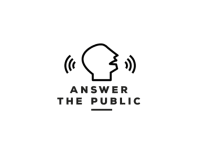
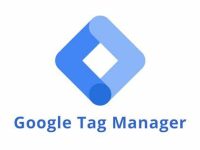
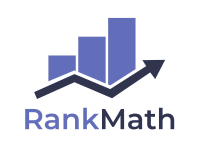



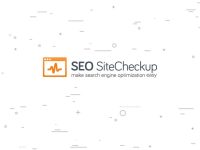
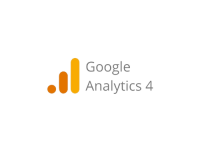



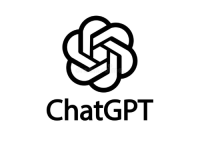
🎖️ Get Certified
Stand out with 10+ certifications, including:
- Google Search Certification
- HubSpot SEO Certification
- SEMrush SEO Toolkit
- Our Own Advanced SEO Certification
These globally recognized credentials will boost your resume and increase your credibility with employers and clients.
Frequently Asked Questions
What is SEO and why is it important?
SEO (Search Engine Optimization) is the process of improving your website’s visibility on search engines like Google. It’s important because higher rankings lead to more organic traffic, better brand awareness, and increased sales or leads.
Who should take this SEO course?
This course is perfect for students, marketers, business owners, freelancers, and anyone interested in mastering SEO to boost their website’s performance or start a career in digital marketing.
Do I need any prior SEO knowledge to join?
No prior SEO experience is needed. The course starts with basics such as keyword research and on-page SEO, then moves on to advanced techniques like link building, technical SEO, and analytics.
What topics does the SEO course cover?
You’ll learn keyword research, on-page SEO, off-page SEO, technical SEO, Google Search Console, backlink strategies, content optimization, SEO tools like SEMrush and Ahrefs, and how to analyze SEO performance.
Will I get to work on practical SEO projects?
Yes! You’ll complete hands-on projects including SEO audits, keyword strategy plans, content optimization, backlink building campaigns, and using SEO tools to track and improve rankings.
Request For a Demo Class
🎓 Request a Free Demo Class
Curious about digital marketing but not sure where to start?
Join our free demo session and experience expert-led, practical training that builds real skills.
✅ Live Interaction
✅ Beginner-Friendly
✅ Career & Course Guidance
📅 Limited seats – Book your free session now and take the first step toward your digital career!
